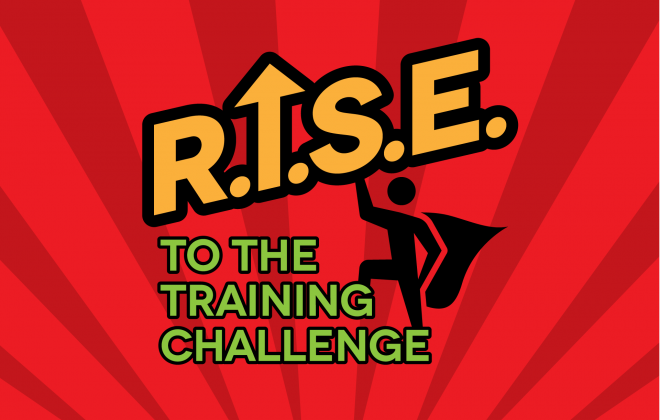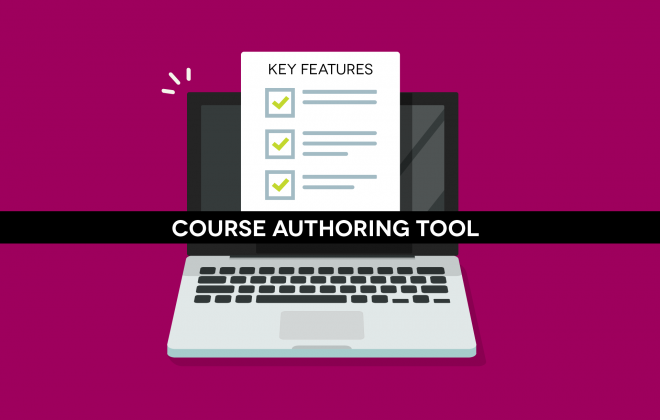
12 Instructional Design Basics You Should Know
Instructional designers are superheroes when it comes to merging learning principles with graphic design. To achieve your superhero status, make sure that you know how to apply these 12 instructional design basics.
- Cater to a Specific Audience
If a seafood fanatic wanted to describe how delicious lobster is, who would be the perfect audience? The person who doesn’t like seafood or their fellow seafood lover? Whether they choose to persuade someone to try lobster or to share their pleasurable experience with other fanatics will depend on the audience they want to reach. The words they choose will be formed with that purpose in mind.
Similarly, you must design courses that are geared toward your particular audience. Take time to write down a specific description of the people who will likely take your course. This will help you understand what your learners really need and want to learn about so that you can correctly shape your content in a way that reflects their interests.
- Break Training Content Into Micro Topics
Which sounds better to you: “Today we are going to teach you how to build a boat,” or “Today we will teach you how to select the best type of wood for building a boat.”? All of a sudden, your thoughts went from “Wow, how I can build a whole boat in one day?” to “Ah, that’s a good place to start for building a boat.” As shown here, a better topic breakdown can change the student’s attitude toward learning.
When you are asked to build a new training module or even a series of elearning courses, ask yourself these two questions: How can the big topic be broken down into micro topics, and which one would be best for my audience to start with? Whether your audience is at a beginner level or more advanced, the topics should be structured to reflect their level of understanding.
- Mine Your Subject Matter Experts for Golden Nuggets
Your SME should provide you with must-have content – That’s a given. But your job as an instructional designer is to obtain insights into content that will make the training go from standard (or boring) to impactful and surprisingly pleasant. To do so, you will need to curate your own helpful open-ended questions for the SME that only they can answer but that you were intuitive enough to ask.
For example, in addition to asking “What does the worker need to know about this task?”, you should also ask, “Are there any tips or tricks to doing this task that would be helpful to know?”. “What can you tell us about this task to save time or achieve better results?” or “How is doing the task this way better than alternative ways?” Learners are savvy; they love learning new ways of doing things, and courses have better results when learning includes golden nuggets of information.
- Write Realistic and Applicable Learning Objectives
The typical reaction to telling someone what to do is usually, “You want me to do what!?! Why?”. It is ingrained in everyone from a young age to question everything, especially when someone asks or tells you to do something. The same goes for learners. This is why we write course objectives.
Learners expect that, if they have to invest time into a course, they will get out of it what the objectives say they will. In this regard, the course objectives must address the “what and why” of the learning content, or in other words, designers must spend quality time developing learning outcomes that match the actual takeaway knowledge delivered in the content. Instead of writing, “You will be able to build a boat using compatible lumber,” a better example would be to say, “You will be able to (WHAT) select quality lumber (WHY) that is optimal for building a boat.”
- Compose Your Outline Like a Symphony Director
Just like a symphony director composes the songs, places the musicians, sets the tempo, and conducts the music to create a masterpiece, so too does the instructional designer engineer a quality course, and it all starts with a detailed and painstakingly crafted outline.
A modern course outline acts more like a collaboration board. It needs to be loaded with headings and subheadings that can be ordered and moved around as the content changes. It needs to keep at hand all resources and links to be used in the development phase. It needs to list learning activity ideas, graphic references, and visual ideas, and it needs to contain assessment points that line up with the objectives and learning goals. Essentially, the outline is the heart from which all content is conceived and executed.
- Provide a Solution to the Problem Presented
All training has a purpose. No one takes a course just to waste time. It’s important that learning designers provide a solution or the epiphany that users expect by the end of the training. In this regard, we need to eliminate “fluff” or extraneous, unnecessary content that has no use or benefit to the course.
For example, early on in my career, I mistakenly included a section called “anatomy of the back” in my Back Safety course. I got carried away with how the back works instead of concentrating my efforts on preventing back injuries. The course did not get the results expected, and only after cutting that section did I get more positive comments on the effectiveness of the course.
- Write Questions on the Critical Content
Course content doesn’t write itself, and neither do test questions. Or do they? In my experience, all critical content reveals itself as the answer to a critical question. It actually takes more effort to write a superfluous question than it does to write the natural question that arises out of the important content you just wrote.
Simply find the most essential point or paragraph and pretend that it just answered someone’s direct question. What would that question be? That’s the question you should test on in your course assessment. Anytime you discover an important question, make sure that it is also covered under one of your course objectives.
- Put “Vitamins” in Your Feedback
Almost everyone knows that the key to a healthy diet is to eat foods with nutritional value. Similarly, the key to optimal test performance is to provide learners with the nourishing “vitamins” they need to formulate a better understanding of your content.
As designers, we know that some content is just going to be hard to grasp, but difficult content doesn’t have to be deterring. To get back on track, adult learners want to know why. Why does x + y = z? Why is this equipment more effective than that equipment? Answering “why” is like putting vitamins in your feedback. Avoid just retelling the answer; instead, lead the learner to formulate an answer based on logic, intuition, and visual clues.
- Use Learning Activities Like Candy
Learning activities are like candy to a learner, and as the designer, there are two ways to use this candy to achieve a better learning experience: for incentive and for reward.
Learning activities are effective for teaching complex or challenging content. They provide motivation in the form of discovery, gaming, and competition. Learning activities are fun, and fun equals incentive. Learning activities also provide a sense of accomplishment in the form of positive feedback and a sense of completion. The “I nailed it” concept keeps learners satisfied and engaged in the course.
- Provide Free Navigation Whenever Possible
Adult learners want to self-direct their learning. In other words, they want to choose relevant topics based on their interests, learn at the pace they are comfortable with, and even jump around within a topic as needed to sustain their attention.
What this means for the designer is: the freer the navigation in your course, the better. For example, as a seasoned instructional designer, would you rather scroll through a complete instructional design course and only view the topics you need to brush up on, or would you rather have to sit through the entire course? The first option is more practical. In light of this, even mandatory training can be adjusted, using modern LMS capabilities, to have semi-free navigation without compromising the training validation.
- Design Pleasing Visual Cues and Moving Elements
Research has shown that apps that look more pleasing retain more users than those that don’t put much effort into graphic design. This fact also applies to course delivery methods. Our eyes are naturally drawn to movement and colors, so we need to use this attraction to our advantage to retain the learner’s attention.
Modern instructional materials should incorporate both trendy and proven graphic design techniques. Always choose a visual aid, such as infographics or charts, to go with plain text, and if you have large amounts of text, divide the text as much as possible into sections, categories, text boxes, etc. Whenever possible, add elements that move, such as an animation or object transition. Choose modern themes and fonts that are cohesive and easy to read, and make sure photos are of good quality and relevant to the topic.
- Support Your Learner With Additional Resources
Which of these resources do you think would be more effective for the seafood lover we mentioned earlier if learning how to cook lobster: 1) A link to the Crusty Lobster Annual Cooking Contest, 2) A link to A Pirate’s Secret Seafood Recipes, or 3) A video link titled “Let’s Boil This Lobster Now!”?
All of them are correct! This is because adult learners want to learn things that are most relevant to the tasks they need to perform or that align with their own goals and interests. Having several targeted resources available to encourage further discovery will provide an enjoyable learning experience that doesn’t have to end with your course.
As a superhero designer, you need to arm yourself with instructional design methods that target and retain users, give them interesting and eye-catching tidbits, and wrap up content in easy-to-digest portions. Now, let’s see how high you can fly!
Related Posts
Latest posts
Categories
- Advantages of an LMS (2)
- Community Involvement (1)
- Compliance Training (7)
- Conferences (1)
- Corporate eLearning (10)
- Customer Service (2)
- DEI (1)
- Diversity (1)
- eLearning Design & Development (10)
- eLearning Trends (12)
- Employee Engagement (7)
- Equity (1)
- ExxTend Learning Features & Updates (2)
- Fun (3)
- Inclusion (1)
- Instructional Design (3)
- Instructor-Led Training (2)
- Learning & Development (20)
- Learning Content (9)
- Learning Management System (12)
- LMS Best Practices (6)
- LMS Implementation (2)
- LMS Software (14)
- Motivation (7)
- News (1)
- Online Training (3)
- Photo (1)
- SaaS (1)
- Software as a Service (7)
- Training & Development (14)
- Uncategorized (1)





